Can you guess it?
The Economist Intelligence Unit has just released its annual ranking of the world’s 10 most expensive cities. Taking into account 400 individual prices across 160 products and services in 133 cities, the survey found that for the third year in a row, Hongkong is the most expensive city in the world.- It’s closely followed by banking capital Zurich and Singapore, which jumped up seven places in the ranking in the last twelve months. Geneva, London, New York,Guangzhou,Beijing and Seoul round out the top ten.
- In making its assessment, the Worldwide Cost of Living survey, which is released twice a year by the EIU, compares prices on everything from food and drink to clothing, household supplies, and personal-care items, home rents, transportation, utility bills, private schools, domestic help, and recreational costs. In total, more than 50,000 individual prices are collected in each survey.
- The report notes that part of Singapore's run as the most expensive city is due to its high transport and utility costs, both of which can affect travelers as they can translate to higher hotel room fees and more expensive public transit. (Singapore’s transportation costs are 2.7 times higher than in New York!)
- Singapore isn’t more expensive in every category, though. Travelling foodies eager to visit the city’s famed Epicurean Market will be pleased to note that basic groceries are cheaper in Singapore than in its Asian neighbors (Seoul is 33% more expensive at the grocery store).
- While Asia has three of the most expensive cities in the world, India has four of the least expensive, including New Delhi, Mumbai, Bangalore, and Chennai. The least expensive city on the 133-city survey is Lusaka, Zambia, meaning it might be time to start planning that safari.
- Contrary to the assumption that Western cities are the costliest, Southeast Asia and Africa feature heavily in the top 18, continuing the trend of emerging markets adjusting to massive outside investment.
- Currency fluctuations were taken into account as well as the inflation of basic goods — especially the price of buying and renting local property.
We kick off with Israel's second-most-populous city after Jerusalem. It's also the most expensive Middle Eastern city to live in, probably thanks to its fantastic beach and relative tranquility? from the surrounding region.The city was founded in 1909 by Jewish immigrants on the outskirts of the ancient port city of Jaffa. It is named after the Hebrew translation of Theodor Herzl's 1902 novel, Altneuland, meaning "Old New Land". The modern city's first neighbourhoods had already been established in 1886, the first being Neve Tzedek.[14] Immigration by mostly Jewish refugees meant that the growth of Tel Aviv soon outpaced Jaffa's, which had a majority Arab population at the time.[15] Tel Aviv and Jaffa were merged into a single municipality in 1950, two years after the establishment of the State of Israel. Tel Aviv's White City, designated a UNESCO World Heritage Site in 2003, comprises the world's largest concentration of International Style buildings (Bauhaus and other related modernist architectural styles)
17. Guangzhou, China —
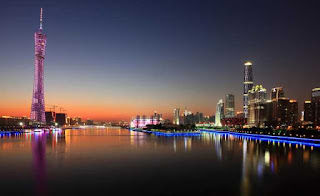 The first of a few Chinese cities on the list, Guangzhou drops three places from last year thanks to a weakening yuan against the dollar.Guangzhou is, at the moment, the third largest city in mainland China, behind Beijing and Shanghai; holds sub-provincial administrative status;[10] and is one of China's five National Central Cities.[11] In 2015 the city's administrative area was estimated to have a population of 13,501,100 and forms part of one of the most populous metropolitan agglomerations on Earth. Some estimates place the population of the built-up area of the Pearl River Delta Mega City as high as 44 million without the Hong Kong SAR and 54 million including it. Guangzhou is identified as a Beta+ Global city. In recent years, there has been a rapidly increasing number of foreign residents and illegal immigrants from the Middle East, Eastern Europe and Southeast Asia, as well as from Africa.This has led to it being dubbed the "Capital of the Third World". The migrant population from other provinces of China in Guangzhou was 40 percent of the city's total population in 2008. Most of them are rural migrants, and they speak only Mandarin.
The first of a few Chinese cities on the list, Guangzhou drops three places from last year thanks to a weakening yuan against the dollar.Guangzhou is, at the moment, the third largest city in mainland China, behind Beijing and Shanghai; holds sub-provincial administrative status;[10] and is one of China's five National Central Cities.[11] In 2015 the city's administrative area was estimated to have a population of 13,501,100 and forms part of one of the most populous metropolitan agglomerations on Earth. Some estimates place the population of the built-up area of the Pearl River Delta Mega City as high as 44 million without the Hong Kong SAR and 54 million including it. Guangzhou is identified as a Beta+ Global city. In recent years, there has been a rapidly increasing number of foreign residents and illegal immigrants from the Middle East, Eastern Europe and Southeast Asia, as well as from Africa.This has led to it being dubbed the "Capital of the Third World". The migrant population from other provinces of China in Guangzhou was 40 percent of the city's total population in 2008. Most of them are rural migrants, and they speak only Mandarin.16. London —
 As expensive as everyone says London is to live in, this list suggests it could still be worse. If the much-discussed property crash does happen, expect it to get a lot cheaper soon.London is a leading global city in the arts, commerce, education, entertainment, fashion, finance, healthcare, media, professional services, research and development, tourism, and transportation. It is one of the world's leading financial centres and has the fifth- or sixth-largest metropolitan area GDP in the world. note London is a world cultural capital. It is the world's most-visited city as measured by international arrivals and has the world's largest city airport system measured by passenger traffic. London is the world's leading investment destination, hosting more international retailers and ultra high-net-worth individualsthan any other city. London's universities form the largest concentration of higher education institutes in Europe, and a 2014 report placed it first in the world university rankings. According to the report, London also ranks first in the world in software, multimedia development, and design and shares first position in technology readiness. In 2012, London became the only city to have hosted the modern Summer Olympic Games three times.
As expensive as everyone says London is to live in, this list suggests it could still be worse. If the much-discussed property crash does happen, expect it to get a lot cheaper soon.London is a leading global city in the arts, commerce, education, entertainment, fashion, finance, healthcare, media, professional services, research and development, tourism, and transportation. It is one of the world's leading financial centres and has the fifth- or sixth-largest metropolitan area GDP in the world. note London is a world cultural capital. It is the world's most-visited city as measured by international arrivals and has the world's largest city airport system measured by passenger traffic. London is the world's leading investment destination, hosting more international retailers and ultra high-net-worth individualsthan any other city. London's universities form the largest concentration of higher education institutes in Europe, and a 2014 report placed it first in the world university rankings. According to the report, London also ranks first in the world in software, multimedia development, and design and shares first position in technology readiness. In 2012, London became the only city to have hosted the modern Summer Olympic Games three times.15. Victoria, Seychelles Isles —
 You may not have heard of this idyllic city, but it was initially a British colony just off the coast of East Africa. Without much space and with high import costs, this place is not cheap.The recorded history of Seychelles dates back to the 16th century. The islands were appropriated and settled by France in the 18th century. African slaves were brought to the island, and the characteristic Seychellois Creole language developed. Britain took possession of the islands in the early 19th century. The Seychelles became an independent republic in 1976. A socialist one-party state ruled the country from 1977 to 1993. The subsequent democratic elections were won by the same socialist party
You may not have heard of this idyllic city, but it was initially a British colony just off the coast of East Africa. Without much space and with high import costs, this place is not cheap.The recorded history of Seychelles dates back to the 16th century. The islands were appropriated and settled by France in the 18th century. African slaves were brought to the island, and the characteristic Seychellois Creole language developed. Britain took possession of the islands in the early 19th century. The Seychelles became an independent republic in 1976. A socialist one-party state ruled the country from 1977 to 1993. The subsequent democratic elections were won by the same socialist party14. Seoul, South Korea —
Finding accommodation in Seoul, which has a metropolitan population of 25 million, is becoming a real problem, but residents can take heart that the city has the world's best internet connectivity, making it a leading tech hub.Seoul is considered a leading and rising global city, resulting from an economic boom called the Miracle on the Han River which transformed it to the world's 4th largest metropolitan economy with a GDP of US$845.9 billion in 2014 after Tokyo, New York City and Los Angeles. In 2015, it was rated Asia's most livable city with the second highest quality of life globally by Arcadis. A world leading technology hub centered on Gangnam and Digital Media City, the Seoul Capital Area boasts 15 Fortune Global 500 companies such as Samsung, the world's largest technology company, as well as LG and Hyundai-Kia. In 2014, the city's GDP per capita (PPP) of $39,786 was comparable to that of France and Finland. Ranked sixth in the Global Power City Index and Global Financial Centres Index, the metropolis exerts a major influence in global affairs as one of the five leading hosts of global conferences
Shenzhen is lesser known than other Chinese cities like Beijing or Shanghai but is still huge, with well over 10 million residents. It has jumped up a couple of places from last year, again thanks to a declining currency.Shenzhen was a market town of 30,000 people on the route of the Kowloon–Canton Railway. That changed in 1979 when Shenzhen was promoted to city-status and in 1980 designated China’s first Special Economic Zone (SEZ). According to the Government report for 2015, Shenzhen had transformed into a city with a population of 10,778,900 and a metropolitan area population of over 18 million. Shenzhen was one of the fastest-growing cities in the world during the 1990s and the 2000s. The population of Shenzhen proper slowed down to less than one percent per year by 2013 with growth spilling over the muncipal border and forming a contiguous urban area with southern Dongguan and Huizhou Cities
12. New York City —
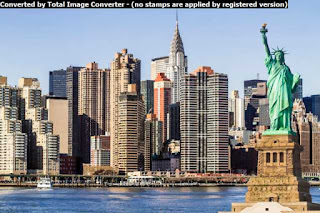 Like London, New York is notoriously expensive. Unlike London, it is getting more expensive to live in, jumping five places from last year. If your stay is longer than a holiday, bring lots of money.Situated on one of the world's largest natural harbors, New York City consists of five boroughs, each of which is a separate county of New York State. The five boroughs – Brooklyn, Queens, Manhattan, The Bronx, and Staten Island – were consolidated into a single city in 1898.The city and its metropolitan area constitute the premier gateway for legal immigration to the United States, and as many as 800 languages are spoken in New York, making it the most linguistically diverse city in the world. By 2015 estimates, the New York City metropolitan region remains by a significant margin the most populous in the United States, as defined by both the Metropolitan Statistical Area (20.2 million residents) and the Combined Statistical Area (23.7 million residents). In 2013, the MSA produced a gross metropolitan product (GMP) of nearly US$1.39 trillion, while in 2012, the CSA generated a GMP of over US$1.55 trillion, both ranking first nationally by a wide margin and behind the GDP of only twelve and eleven countries, respectively
Like London, New York is notoriously expensive. Unlike London, it is getting more expensive to live in, jumping five places from last year. If your stay is longer than a holiday, bring lots of money.Situated on one of the world's largest natural harbors, New York City consists of five boroughs, each of which is a separate county of New York State. The five boroughs – Brooklyn, Queens, Manhattan, The Bronx, and Staten Island – were consolidated into a single city in 1898.The city and its metropolitan area constitute the premier gateway for legal immigration to the United States, and as many as 800 languages are spoken in New York, making it the most linguistically diverse city in the world. By 2015 estimates, the New York City metropolitan region remains by a significant margin the most populous in the United States, as defined by both the Metropolitan Statistical Area (20.2 million residents) and the Combined Statistical Area (23.7 million residents). In 2013, the MSA produced a gross metropolitan product (GMP) of nearly US$1.39 trillion, while in 2012, the CSA generated a GMP of over US$1.55 trillion, both ranking first nationally by a wide margin and behind the GDP of only twelve and eleven countries, respectively11. Beijing —
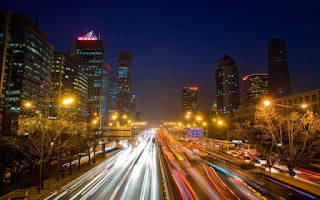
Into the top 10, and we have another Chinese entry. Beijing is known for its sometimes hazardous smog, but that does not seem to have made living there any cheaper.A city combining both modern and traditional architecture, Beijing is an ever-changing megacity rich in history but also truly modern, exemplified in its extraordinary global influence in politics, business & economy, education, history, culture, language, music, sporting, architecture, civilization, fashion, art, entertainment, innovation and technology. Beijing is the second largest Chinese city by urban population after Shanghai and is the nation's political, cultural, and educational centre. It is home to the headquarters of most of China's largest state-owned companies, and is a major hub for the national highway, expressway, railway, and high-speed rail networks. The Beijing Capital International Airport has been the second busiest in the world by passenger traffic since 2010, and, as of 2016, the city's subway network is the busiest and second longest in the world, after Shanghai's subway system.The city's history dates back three millennia. As the last of the Four Great Ancient Capitals of China, Beijing has been the political centre of the country for much of the past eight centuries. With mountains surrounding the inland city on three sides, in addition to the old inner and outer city walls, Beijing was strategically poised and developed to be the residence of the emperor and thus was the perfect location for the imperial capital. Beijing was the largest city in the world by population for much of the second millennium A.D. The city is renowned for its opulent palaces, temples, parks, gardens, tombs, walls and gates, and its art treasures and universities have made it a centre of culture and art in China. Encyclopædia Britannica notes that "few cities in the world have served for so long as the political headquarters and cultural centre of an area as immense as China." Beijing has seven UNESCO World Heritage Sites – the Forbidden City, Temple of Heaven, Summer Palace, Ming Tombs, Zhoukoudian, as well as parts of the Great Wall and the Grand Canal, all popular locations for tourism. siheyuans, the city's traditional housing style, and hutongs, the narrow alleys between siheyuans, are common in urban Beijing and are also major tourist attractions. The city hosted the 2008 Summer Olympics and was chosen to host the 2022 Winter Olympics, which will make it the first city to ever host both events.
10. N'Djamena, Chad —
The capital of the central North African country, N'Djamena serves as a major food hub and marketplace for the region.It is the capital and largest city of Chad. A port on the Chari River, near the confluence with the Logone River, it directly faces the Cameroonian town of Kousséri, to which the city is connected by a bridge. It is also a special statute region, divided into 10 arrondissements. It is a regional market for livestock, salt, dates, and grains. Meat, fish and cotton processing are the chief industries, and the city continues to serve as the center of economic activity in Chad. Its expense can be put down to an exploding population, which has multiplied by 100 in just 70 years.During the Second World War, the French relied heavily upon the city's airport to move troops and supplies. On 21 January 1942, a lone German He 111 of the Sonderkommando Blaich successfully bombed the airfield at Fort Lamy, destroying oil supplies and ten aircraft. Fort Lamy received its first bank branch in 1950, when the Bank of West Africa (BAO) opened a branch there.8. Geneva —
It may be expensive, but Switzerland sure is pretty. Like many global finance centres Geneva is pricey, but a declining currency has somewhat offset its cost of living for expatriates?.The municipality (ville de Genève) has a population (as of December 2015) of 198,072, and the canton (which is essentially the city and its inner-ring suburbs) has 484,736 residents. In 2014, the compact agglomération du Grand Genève had 946,000 inhabitants in 212 communities in both Switzerland and France. Within Swiss territory, the commuter area named "Métropole lémanique" contains a population of 1.25 million.[citation needed] This area is essentially spread east from Geneva towards the Riviera area (Vevey, Montreux) and north-east towards Yverdon-les-Bains, in the neighbouring canton of Vaud.Geneva is a global city, a financial center, and worldwide center for diplomacy due to the presence of numerous international organizations, including the headquarters of many of the agencies of the United Nations and the Red Cross. Geneva is the city that hosts the highest number of international organizations in the world. It is also the place where the Geneva Conventions were signed, which chiefly concern the treatment of wartime non-combatants and prisoners of war.7. Shanghai —
Shanghai is China's most populous city, with over 24 million residents and counting.Shanghai is the most populous city proper in the world, with a population of more than 24 million as of 2014. As one of the four direct-controlled municipalities of the People's Republic of China, it is a global financial centre and transport hub, with the world's busiest container port. Located in the Yangtze River Delta in East China, Shanghai sits on the south edge of the mouth of the Yangtze in the middle portion of the eastern Chinese coast. The municipality borders the provinces of Jiangsu and Zhejiang to the north, south and west, and is bounded to the east by the East China Sea.As a major administrative, shipping and trading city, Shanghai grew in importance in the 19th century due to trade and recognition of its favourable port location and economic potential. The city was one of five treaty ports forced open to foreign trade following the British victory over China in the First Opium War. The subsequent 1842 Treaty of Nanking and 1844 Treaty of Whampoa allowed the establishment of the Shanghai International Settlement and the French Concession. The city then flourished as a center of commerce between China and other parts of the world (predominantly Western countries), and became the primary financial hub of the Asia-Pacific region in the 1930s. However, with the Communist Party takeover of the mainland in 1949, trade was limited to other socialist countries, and the city's global influence declined. In the 1990s, the economic reforms introduced by Deng Xiaoping resulted in an intense re-development of the city, aiding the return of finance and foreign investment to the city.As with other cities in the country, a falling currency has seen it drop from last year, but new arrivals will still need to bring a lot of money.
6. Kinshasa, DR Congo —
Another city you may not have heard of, Kinshasa is actually massive, with more than 13 million inhabitants. It has jumped seven places in the list since last year, partly because of concerted Chinese investment efforts.Once a site of fishing villages, Kinshasa is now an urban area with a 2014 population of over 11 million. It faces Brazzaville, the capital of the neighbouring Republic of the Congo, which can be seen in the distance across the wide Congo River, making them the two closest capital cities on Earth. The city of Kinshasa is also one of the DRC's 26 provinces. Because the administrative boundaries of the city-province cover a vast area, over 90% of the city-province's land is rural in nature, and the urban area only occupies a small section in the far western end of the city-province.Kinshasa is Africa's third-largest urban area after Cairo and Lagos. It is also the world's largest "francophone" urban area (recently surpassing Paris in population), with French being the language of government, schools, newspapers, public services, and high-end commerce in the city, while Lingala is used as a lingua franca in the street. Kinshasa hosted the 14th Francophonie Summit in October 2012.5. Tokyo —
No, that is not the Eiffel Tower but rather the Tokyo Tower, located in the heart of the vast city. Tokyo jumped six places from last year thanks to a strengthening yen, but Japan has always been notoriously expensive to visitors as it is.Tokyo is often referred to as a city, but is officially known and governed as a "metropolitan prefecture", which differs from and combines elements of a city and a prefecture, a characteristic unique to Tokyo. The Tokyo metropolitan government administers the 23 Special Wards of Tokyo (each governed as an individual city), which cover the area that was the City of Tokyo before it merged and became the metropolitan prefecture in 1943. The metropolitan government also administers 39 municipalities in the western part of the prefecture and the two outlying island chains. The population of the special wards is over 9 million people, with the total population of the prefecture exceeding 13 million. The prefecture is part of the world's most populous metropolitan area with upwards of 37.8 million people and the world's largest urban agglomeration economy. The city hosts 51 of the Fortune Global 500 companies, the highest number of any city in the world. Tokyo ranked third in the International Financial Centres Development IndexEdit. The city is also home to various television networks such as Fuji TV, Tokyo MX, TV Tokyo, TV Asahi, Nippon Television, NHK and the Tokyo Broadcasting System.Tokyo ranked first in the Global Economic Power Index and fourth in the Global Cities Index. The city is considered an alpha+ world city – as listed by the GaWC's 2008 inventory – and in 2014, Tokyo was ranked first in the "Best overall experience" category of TripAdvisor's World City Survey (the city also ranked first in the following categories: "helpfulness of locals", "nightlife", "shopping", "local public transportation" and "cleanliness of streets").4. Singapore —
 The world's only island city-state, Singapore is known for its transport hubs and strict rules on litter. The World Bank called it "the easiest place to do business," which is why companies all over the world flock to its shores — pushing up prices.Singapore is a global commerce, finance and transport hub. Its standings include: the most "technology-ready" nation (WEF), top International-meetings city (UIA), city with "best investment potential" (BERI), second-most competitive country, third-largest foreign exchange market, third-largest financial centre, third-largest oil refining and trading centre, and the second-busiest container port. The country has also been identified as a tax haven.Singapore is ranked 11th internationally and first in Asia on the UN Human Development Index. It is ranked highly in education, healthcare, life expectancy, quality of life, personal safety, and housing, but does not fare well on the Democracy index. Although income inequality is high, 90% of homes are owner-occupied. 38% of Singapore's 5.6 million residents are permanent residents and other foreign nationals. There are four official languages on the island: Malay, Mandarin, Tamil and English. English is its common language; most Singaporeans are bilingual.Singapore is a unitary multiparty parliamentary republic, with a Westminster system of unicameral parliamentary government.
The world's only island city-state, Singapore is known for its transport hubs and strict rules on litter. The World Bank called it "the easiest place to do business," which is why companies all over the world flock to its shores — pushing up prices.Singapore is a global commerce, finance and transport hub. Its standings include: the most "technology-ready" nation (WEF), top International-meetings city (UIA), city with "best investment potential" (BERI), second-most competitive country, third-largest foreign exchange market, third-largest financial centre, third-largest oil refining and trading centre, and the second-busiest container port. The country has also been identified as a tax haven.Singapore is ranked 11th internationally and first in Asia on the UN Human Development Index. It is ranked highly in education, healthcare, life expectancy, quality of life, personal safety, and housing, but does not fare well on the Democracy index. Although income inequality is high, 90% of homes are owner-occupied. 38% of Singapore's 5.6 million residents are permanent residents and other foreign nationals. There are four official languages on the island: Malay, Mandarin, Tamil and English. English is its common language; most Singaporeans are bilingual.Singapore is a unitary multiparty parliamentary republic, with a Westminster system of unicameral parliamentary government.3. Zurich —
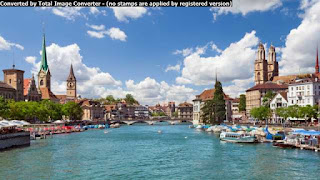 he most expensive city in Europe, Zurich is a global centre for banking and has one of the best quality of life indexes in the world.Zürich is a hub for railways, roads, and air traffic. Both Zürich Airport and railway station are the largest and busiest in the country.Permanently settled for about 2000 years, Zürich has a history that goes back to its founding by the Romans, who, in 15 BC, called it Turicum. However, early settlements have been found dating back more than 6400 years ago. During the Middle Ages, Zürich gained the independent and privileged status of imperial immediacy and, in 1519, became a primary centre of the Protestant Reformation in Europe under the leadership of Huldrych Zwingli.The official language of Zürich is (the Swiss variety of Standard) German, but the main spoken language is the local variant of the Alemannic Swiss German dialect.Zürich is a leading global city and among the world's largest financial centres despite having a relatively small population. The city is home to a large number of financial institutions and banking giants. Most of Switzerland's research and development centres are concentrated in Zürich and the low tax rates attract overseas companies to set up their headquarters there. That quality of life doesn't come cheap.
he most expensive city in Europe, Zurich is a global centre for banking and has one of the best quality of life indexes in the world.Zürich is a hub for railways, roads, and air traffic. Both Zürich Airport and railway station are the largest and busiest in the country.Permanently settled for about 2000 years, Zürich has a history that goes back to its founding by the Romans, who, in 15 BC, called it Turicum. However, early settlements have been found dating back more than 6400 years ago. During the Middle Ages, Zürich gained the independent and privileged status of imperial immediacy and, in 1519, became a primary centre of the Protestant Reformation in Europe under the leadership of Huldrych Zwingli.The official language of Zürich is (the Swiss variety of Standard) German, but the main spoken language is the local variant of the Alemannic Swiss German dialect.Zürich is a leading global city and among the world's largest financial centres despite having a relatively small population. The city is home to a large number of financial institutions and banking giants. Most of Switzerland's research and development centres are concentrated in Zürich and the low tax rates attract overseas companies to set up their headquarters there. That quality of life doesn't come cheap.2. Luanda, Angola —
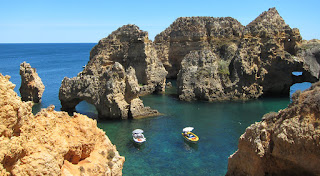 Luanda, formerly named São Paulo da Assunção de Loanda, is the capital and largest city in Angola, and the country's most populous and important city, primary port and major industrial, cultural and urban centre. Located on Angola's coast with the Atlantic Ocean, Luanda is both Angola's chief seaport and its administrative centre. It has a metropolitan population of over 6 million. It is also the capital city of Luanda Province, and the world's third most populous Portuguese-speaking city, behind only São Paulo and Rio de Janeiro, both in Brazil, and the most populous Portuguese-speaking capital city in the world, ahead of Brasília, Maputo and Lisbon. Africa's most expensive city to live in, Luanda lies on the continent's west coast and is actually one of the smaller metros on the list, with about 6 million residents. The high prices can be put down to the massive infrastructural investment taking place in response to the relentless? gross-domestic-product growth from mining operations.
Luanda, formerly named São Paulo da Assunção de Loanda, is the capital and largest city in Angola, and the country's most populous and important city, primary port and major industrial, cultural and urban centre. Located on Angola's coast with the Atlantic Ocean, Luanda is both Angola's chief seaport and its administrative centre. It has a metropolitan population of over 6 million. It is also the capital city of Luanda Province, and the world's third most populous Portuguese-speaking city, behind only São Paulo and Rio de Janeiro, both in Brazil, and the most populous Portuguese-speaking capital city in the world, ahead of Brasília, Maputo and Lisbon. Africa's most expensive city to live in, Luanda lies on the continent's west coast and is actually one of the smaller metros on the list, with about 6 million residents. The high prices can be put down to the massive infrastructural investment taking place in response to the relentless? gross-domestic-product growth from mining operations.
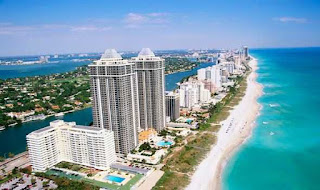




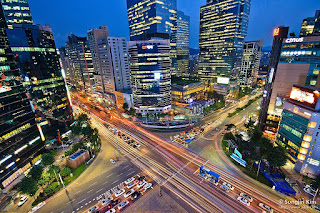



0 comments:
Post a Comment